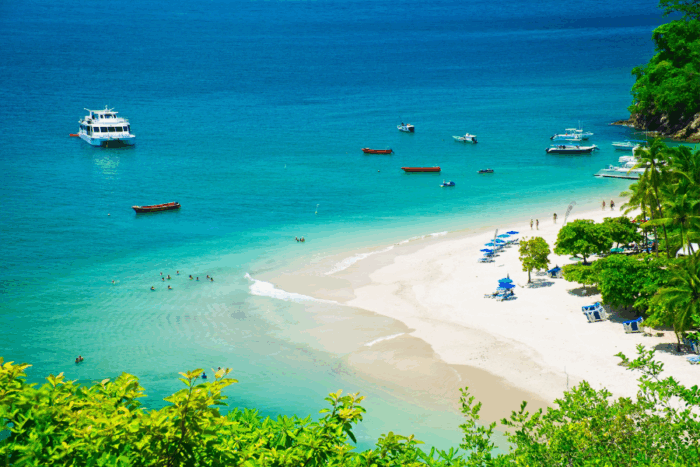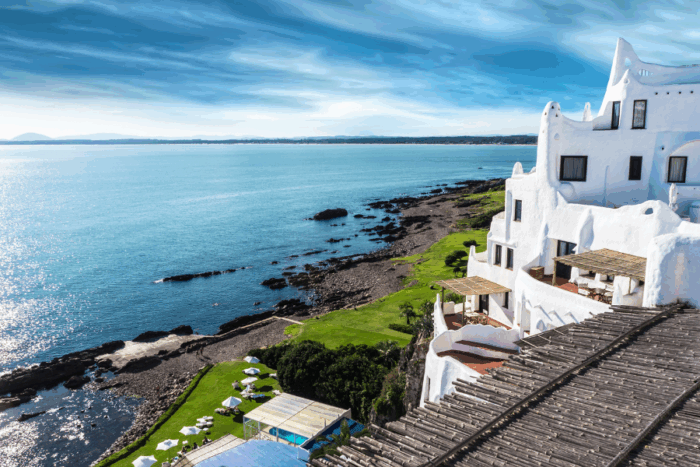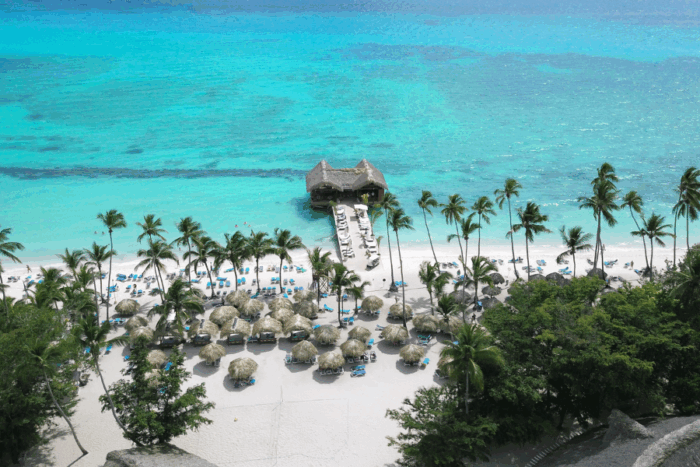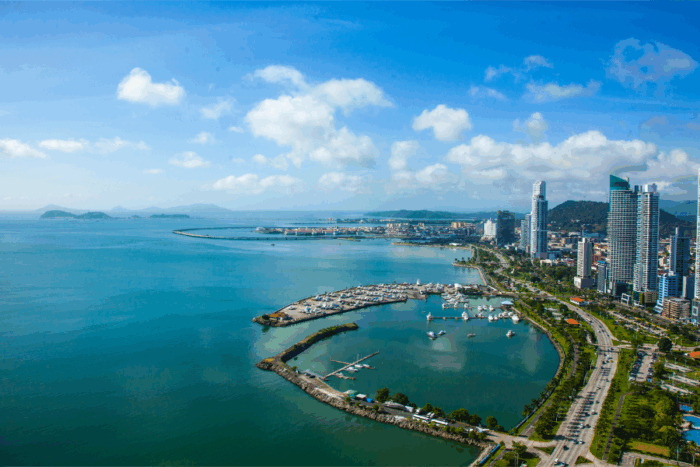How to Pay Zero Tax in Latin America
May 2, 2025
Latin America has a reputation among many investors as a ‘tax hell’, and its headline tax rates seem to bear out this theory.
Colombia taxes top earners at 39%, Ecuador at 37%, and Chile climbs to 35.5%. Those aren’t tax rates to sniff at – they’d make a freedom-sized hole in any annual tax return.
But here’s what the headlines miss – smart planning flips the script.
In the right Latin American countries with the correct residency strategy, you can legally reduce your tax burden to zero, even while living in comfort, surrounded by natural beauty and like-minded expats.
Several countries in the region operate under the territorial tax system, meaning foreign income isn’t taxed at all. Others allow you to become a legal non-resident, even while maintaining residency privileges.
Throw in a lower cost of living, lifestyle perks, and time zone alignment with the US, and a select few countries south of the Rio Grande have concocted a formula that’s hard to beat.
Certainly, this Latin American combination has been potent enough to attract a huge number of US expats already.
This Nomad Capitalist guide on how to pay zero tax in Latin America explores the most tax-friendly jurisdictions and how you can qualify to reap the rewards.
Which Latin American Countries Have the Lowest Taxes?
If you’re considering becoming a tax resident in Latin America, then these are the best countries to do it.
Guatemala
Guatemala boasts the lowest headline personal income tax rate in Latin America, at just 7%. Better yet, it has a territorial tax system, meaning this low rate only applies to income generated within Guatemala.
So, if you’re running an offshore business or making money from overseas investments, you won’t pay tax on any of that.
While Guatemala may not be considered a luxury destination like Monaco or Dubai, it can still be a great place for the right expat.
Yes, there are pockets of natural beauty around Lake Atitlan, for example. But across most of the country, crime rates are high, and the infrastructure leaves much to be desired.
Thankfully, other Latin American countries provide higher levels of luxury than Guatemala and are just as tax-friendly in certain scenarios.
Paraguay

Paraguay boasts headline rates of just 10% for personal and corporate tax.
What’s more, just like Guatemala, there’s a territorial tax system here. So, if your income is generated outside of Paraguay and remains offshore, the country won’t tax it.
Paraguay’s government offers one of the most accessible temporary residencies. This can be upgraded to permanent residency after two years, provided you’re physically present in the country for one day per year. You’ll need to spend just 120 days per year there to qualify as a tax resident.
You can also claim permanent residency immediately by committing to invest US$70,000 in a qualifying Paraguayan business.
After three years of permanent residency, you can qualify for citizenship by naturalisation, one of the easiest and cheapest ways to gain a second passport.
Paraguay is far from a flashy place to live and is not as developed as some other countries on this list. But, you’ll find a community of wealthy expats in Asunción, if only because of the simple path to lowering your taxes and diversifying a passport portfolio.
Panama
Panama doesn’t boast headline tax rates anywhere near as low as those in Paraguay. The top rate is 25% for personal income tax and corporation tax.
However, like Paraguay, Panama has a territorial tax system that allows residents to legally avoid paying tax on overseas income.
Panama also boasts one of the world’s most accessible residencies, particularly if you’re a citizen of a country on its Friendly Nations list.
You’ll need to live in Panama for at least six months and prove that it’s your main country of residence (by showing that you have bought or are renting a property there, for example).
The capital, Panama City, is a hotspot for wealthy expats. There, you’ll find the best healthcare options, international schools, and modern infrastructure.
With that said, other expats opt for lazy village life in areas like Boquete or El Valle.
Costa Rica

Costa Rica is a beautiful country in Central America that offers breathtaking natural surroundings, a safe and peaceful lifestyle and a tax-friendly residency for foreign business owners.
That’s because Costa Rica also has a territorial tax system, which means the country won’t tax any money generated outside of its borders.
You can gain residency by demonstrating a passive income of US$2,500 per month, investing US$100,000 in reforestation projects or US$150,000 in local real estate. After three years as a temporary resident, permanent residency is available.
You must spend at least 183 days per year in Costa Rica to be classed as a tax resident and benefit from its territorial system, but there are worse places to spend half a year.
Its capital, San Jose, isn’t the most inspiring place, but if you love beach towns engulfed in tropical rainforests, there will be plenty of luxury neighbourhoods to choose from.
Nicaragua
Nicaragua earns its place on our list as it also has a territorial tax system, meaning you can pay 0% tax on your foreign-earned income. An exception is that money remitted into a local corporate bank account will be taxed.
You’ll be considered a tax resident in Nicaragua if you’re physically present there for at least 180 days in a tax year or if your main centre of economic interest is based there.
Nicaragua falls behind many countries on this list in terms of infrastructure and safety. Although it might still rank as your dream destination if you love surfing.
Uruguay

Often called ‘the Switzerland of South America’, Uruguay is one of the safest, most well-developed, and tax-friendly countries on the continent.
You have two options as a foreigner who becomes a tax resident of this interesting country.
Your first option is to take a 10-year tax holiday, in which you’ll pay no income tax on foreign-sourced income. After the tax holiday, you’ll pay 12% tax on worldwide income from capital investments.
However, if you’re sure you want to remain in Uruguay for the long term, you can forgo the tax holiday and opt to pay 7% on your worldwide income for life.
You can get residency by proving a passive income of US$1,500 per month or investing US$500,000 in Uruguayan real estate. If you take the real estate option, you can become a Uruguayan tax resident by spending just 60 days in the country.
Read our full guide on other options to gain tax residency in Uruguay if that option isn’t suitable for you.
Chile
Chile has one of the highest headline rates of personal income tax in South America, yet it can still be somewhat of a short-term tax haven for foreign expats.
That’s because new arrivals are granted a tax holiday on foreign-sourced income for three years. After that, you’ll be exposed to some of the highest tax rates in the region.
Still, this could be an interesting option, as Chile grants citizenship by naturalisation after five years and boasts the strongest passport in South America.
If you’re interested in boosting your passport portfolio, Chile could be a good option.
It only requires six consecutive months of physical presence per year to claim Chilean tax residency, but you’ll need to spend 22 of your first 24 months there to upgrade from a temporary residency to a permanent one.
Chile is one of the best-developed countries in Latin America, so spending time there is hardly a chore.
Dominican Republic

The Dominican Republic boasts the fastest-growing economy in Latin America and has several schemes that could make it tax-friendly for foreign expats.
It has a semi-territorial tax system in which only passive foreign-sourced income (such as dividends, rental income or capital gains) is taxed. Active foreign-sourced income derived from professional services or active trading will not be taxed.
There are no Controlled Foreign Company (CFC) tax rules, which means your income can be retained tax-free in foreign corporations.
Plus, new arrivals can benefit from a three-year tax holiday where no form of foreign-sourced income is taxed at all.
You’ll need to be in the Dominican Republic for more than 182 days per year to qualify as a tax resident.
You can access a temporary residency by showcasing at least US$2,000 per year in passive income or US$1,500 if that income is from a pension.
Permanent residency is available through the Domestic Investor program if you’re willing to invest at least US$200,000 in qualifying real estate or a local business.
Applicants can qualify for citizenship in the Dominican Republic after just six months. Although this isn’t technically a citizenship-by-investment program, it can be almost as fast and just as affordable as other CBI programs in the Caribbean.
Lowest Corporate Tax Rates in Latin America
The optimal corporate tax rate is 7% in Guatemala, which is the lowest rate in Latin America, though there is a separate corporate tax rate of 25%. In South America, the lowest is 10% in Paraguay.
That’s far from terrible, but we don’t see much of a reason for you to pay that either.
If you want to live in Paraguay or anywhere else in Latin America, you’re better off incorporating your business somewhere else.
There are plenty of jurisdictions that won’t charge any corporate tax on revenue if you set up your business there.
So why not enjoy the best of both worlds? The fun and sunshine of Latin America, plus the tax-friendliness of incorporating your business in the Cayman Islands, for example.
We help our clients set up their financial affairs in the most compliant and tax-friendly manner based on their unique personal and professional goals. You can learn more about our holistic Nomad Capitalist plans here.
Latin America Tax: FAQs
Paraguay has a headline rate of 10% for personal income tax and corporate tax, which is the lowest in South America.
That depends on your definition of ‘tax haven’. It’s possible to pay no tax in Panama, Costa Rica and Nicaragua on overseas income due to their territorial tax systems. Other regions like Uruguay, Chile and the Dominican Republic offer tax holidays on foreign income for new arrivals.
The simplest way to avoid paying income tax in Latin America is by not staying long enough to be a tax resident there. If you’re generating money overseas, you can avoid income tax by moving to a country with a territorial tax system.
Brazil has the best economy in Latin America, based on GDP per capita, estimated to be US$10,296.41 in 2025.
Paraguay is the most affordable country to live in Latin America, according to the Numbeo Cost of Living Index 2025.
Planning to Move to Latin America?

Relocating to Latin America can be a breath of fresh air.
In most cases, you’ll enjoy warm year-round weather and a lower cost of living. But you’ll have to be smart to move in a tax-friendly way.
Each country has its own rules, and it can take some planning to ensure you qualify for the tax benefits available to foreign residents.
Nomad Capitalist has helped thousands of high-net-worth individuals to ‘go where they’re treated best’ in a tax-compliant way.
Our clients are paired with experts in taxation, investment strategy, asset protection and immigration to help them execute a holistic plan based on their personal goals. To learn more about how we can help you, get in touch today.



How To Open a Bank Account in Portugal in 5 Steps
Whether you’re preparing to relocate to Portugal or wish to conduct business in the country, opening a bank account is among the first steps you’ll need to take. Although the process is typically straightforward, there are some considerations to keep in mind before committing to any bank. In this guide, we’ll explain how to open […]
Read more

Starting a Business in Portugal as a Foreigner: Methods, Costs, and Benefits
Thanks to its EU membership and supportive business environment, Portugal has become an increasingly attractive destination for entrepreneurs from around the world. However, for non-EU nationals, navigating the process of setting up a business in Portugal can be complex. It requires a solid understanding of legal structures, taxation, and business visa options. This guide will […]
Read more

Property Taxes in Portugal: Annual Rates and Rules for Expats
Purchasing property in Portugal is often a more affordable investment than buying real estate in countries like the U.S., making it an attractive option for expats. However, real estate owners are subject to different tax rates depending on the property’s value and its intended purpose. To help you understand property taxes in Portugal, this guide […]
Read more




